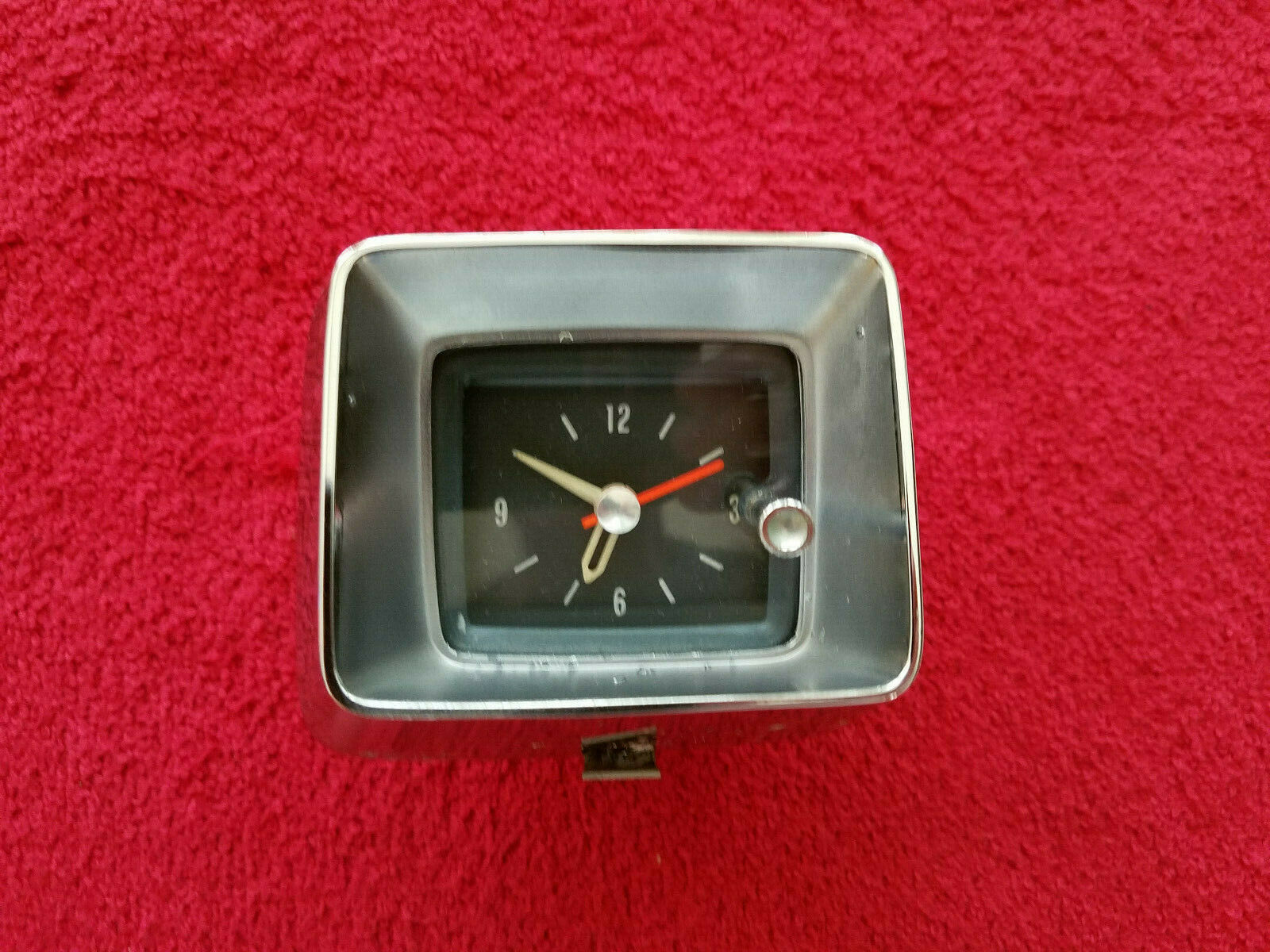-40%
1966 Pontiac Clock Used Original Cleaned Tested
$ 47.49
- Description
- Size Guide
Description
Clock disassembled, cleaned, inspected, bench tested.Clock contact points which are part of the electrical rewind circuit cleaned, dressed. Lubricated movement's balance wheel, oscillator bar, escapement drive gear, gear pivot holes with synthetic watch oil. Connected clock to a power source and ran clock 8 - 12 hours.
Chrome bezel is pitted and will need to be either replaced or sent out for replating.
Lens has no cracks, breaks, nice clear lens.
Clock face colors, lettering, numbers, markings in good condition.
Time adjustment works.
Metal housing media cleaned, no damage.
Please Note:
While I have provided an honest assessment of the clocks current condition, due to its decades old age and unknown history, I make no guarantees especially on life
expectancy. I cannot guarantee this clock will run one day, one week, one month, or several years, but right now it is ticking and working
Clock sold in AS IS condition.
A WORD ABOUT VINTAGE CLOCKS
I am not a trained clock repairman, just an old car hobbyist that enjoys the challenge of restoring old automobile clocks back to working condition. Assuming no physical damage or rust issues, clocks can be brought back to life by performing 4 operations that do not require the skill of a trained clock repairman.
1) cleaning
2) lubricating
3) dressing contact points
4) resoldering wires
If the clock will not run after performing these 4 operations, its time to send the clock to a clock repair shop.
There are two parts to automotive clocks of the 1930s - 1960s, an electrically-actuated winding mechanism and a mechanical gear train that advances the clock hands. Electric power is available to the clock whether or not the car is running. As the clock runs, a set of contact points wired in series with a solenoid close, energizing the solenoid which rewinds the clock. This cycle repeats itself every 1 to 2 minutes. As the car sits unused, the clock continues to run and the battery begins losing voltage. At some point, the full 6 or 12 volts are no longer available. The voltage reaches a level that is not high enough to energize the solenoid, but there is still current flowing to the clock and the contact points stay closed. The wires or solenoid get so hot that they burn through or the contact points corrode and pit reducing electrical conductivity. Result: the clock stops running.
If you look at the owners manual for these clocks, you will see that they were never designed to be maintenance-free. They require periodic cleaning and oiling. Friction is the enemy of a clock and while the clock will run without lubrication, as oil dries and dirt accumulates, wear starts to occur. Result: gear pivot holes become elongated and the clock will start to run erratically or it may run an hour or two then stop when the gears bind up.
While I cant guarantee this clock will run one day, one week, one month, or several years, I do know there are only so many cycles built into the clock before it starts to wear out.
You can help to keep this clock running as long as possible by disconnecting the battery when you are not operating the car and keeping the battery fully charged.
Low voltage will cause the points to stay closed overheating the circuit resulting in a burned out solenoid, pitted points, or broken wires. Also consider removing the clock (as recommended in the owners manual) and have it cleaned and oiled on a periodic basis.
















